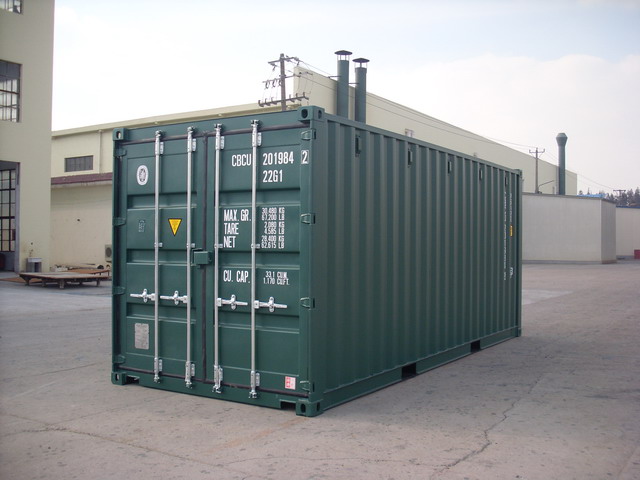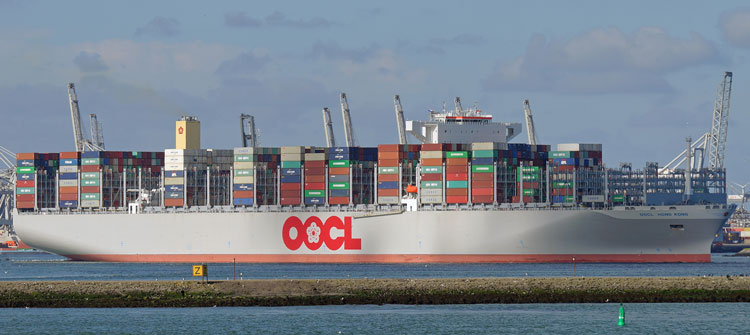Facts about Shipping Containers

Last Updated on May 1, 2025
Shipping containers have affected our daily lives for many years, but what do you know about them? This article will help you out with some facts about shipping containers. Shipping containers carry a large percentage of the goods that impact our daily lives, and many people work with them (both directly and indirectly) in business. Since many people don’t think about containers regularly, we thought you might like to hear a few facts about shipping containers.
Here at Billie Box we sell shipping containers and rent shipping containers.
The Inventors of Shipping Containers
The inventor of the shipping container was Keith Tantlinger (1919-2011) (chief engineer at Brown Industries). In 1949 he designed the first modern shipping container, a 30ft Aluminium box that could be stacked 2 high on barges operating between Seattle and Alaska. Everybody was interested in this concept but unfortunately, nobody wanted to spend the money to get this idea off the ground. Source: The Box by Marc Levinson
Malcolm McLean (1913-2001) a very well respected Truck magnate since March 1934. McLean enlisted Tantlinger’s help to get advice on the shipping container idea. There was much discussion in working out what size container could be loaded in a hold of a ship, to get the maximum amount of cargo shipped most economically. In the 1950s McLean adapted the long-used transportation formula whose birth dates back to the early twentieth century.
The metal shipping container (intermodal container), that we know today, replaced the old-style “break bulk” method of goods handling. 26th April 1956 was when Containerisation was born. McClean understood that reducing the cost of shipping goods required not just a metal box but an entirely new way of handling freight.
This meant that every part of the shipping system had to change-that included: ports, ships, cranes, storage facilities, trucks, trains and the operations of the shippers themselves. He was years ahead of his time. Source: The Box by Marc Levinson
Standardised sizes and big numbers
The standard container sizes are 20ft long or 40ft long. Although the 20ft units are referred to as 20ft long, the actual size is 19ft 10.5in long and the 40ft is 40ft long! The standard widths are 8ft, and the heights can be either 8ft 6in or 9ft 6in. The 9ft 6in high units are known as Hi cubes.
In 2012, over 20 million shipping containers in the world, and five or six million of them are shipping around the world on vessels, trucks, and trains. In total, they make approximately 200 million trips a year.
It’s estimated that there are 10,000 shipping containers lost at sea (including catastrophic events) every year. That’s almost 192 containers every day! Source: Singularity Hub. Lost containers can be damaged by waves and sink (a 20ft can take up to 57 days, and a 40ft will take three times as long, to sink). The ones that don’t sink, often float just below the surface, which can cause a lot of damage to other sailing vessels.
Where are shipping containers made?
Approximately 97% of all shipping containers are manufactured in China. This is because the Chinese labour rate is lower than many other countries and that much of the world’s products are produced in China. Producing the container close to the shipment is far easier than re-posting containers worldwide. China manufactures approx. 5.8 million TEU (20ft equivalent) per annum. Source: Wikipedia
Container Ships around the world
Shanghai, China, was the busiest container port in the world in 2018. 42 million (TEU=equivalent to a 20ft container) containers passed through the port in 2018. Source: World Shipping council.
The Port of Felixstowe handled 3.85 million 20ft equivalent containers during 2018. Felixstowe handles the largest containerised traffic in the UK and handles 37% of the UK’s container units. Source: UK Department of Trade
According to the International Chamber of Shipping, there are more than 50,000 merchant ships operating in the oceans in 2019. The ‘OOCL Hong Kong’ was recorded as the largest cargo ship in the world in 2019. The ‘OOCL Hong Kong’ is owned by OOCL and is a length of 400 meters long by 58.8 meters wide by 32.5 meters in depth and holds the equivalent of 21,413 TEU (TEU=20ft equivalent). The OOCL Hong Kong visited Felixstowe in June 2017.

All commercially used shipping containers have a serial number which is made up of a 4 letter prefix (nearly always ending with a U and a seven-digit number [XXX-U-123456-1]. The first three letters signify the owner, and the next letter is the category of the container (U = unit freight container), followed by a six-digit serial number and finally a check digit. There is a mathematical formula that works out the check digit (final number).
Shipping containers can last over 25 years! Provided they are taken care of with regular paint and maintenance. See our Container care page.
A standard 20′ shipping container can hold 1,170 cubic feet and the max gross weight is 30T with a tare weight of 2.2T. A 40′ high cube contains 2,700 cubic feet and the max gross weight is 32.5T with a tare weight of 3.8T.
Liner ships transport approximately 60 per cent of the value of seaborne trade or more than US $4 trillion worth of goods annually. Source: World Shipping Council. It still makes financial sense to transport goods in high volume via sea/ocean.
All shipping containers have a CSC plate affixed, which acts as a passport for a container. HSE have more information
In 2020/21 there became a Worldwide shortage due to the pandemic first and then the massive knock-on effect. Please read our blog post here for more information.
Shipping container dimensions
Container Dimensions
| Container Dimensions | |||||||
|---|---|---|---|---|---|---|---|
| Size/Type of container | 10ft store | 20ft store | 40ft store | 20ft Tunnel | 20ft Opensider | 20ft High cube | 40ft High cube |
| External dimensions | |||||||
| Length Width Height | 3.05 m (9ft 10in) 2.43 m (8ft) 2.59 m (8ft 6in) | 6.04 m (19ft 10in) 2.43 m (8ft) 2.59 m (8ft 6in) | 12.19 m (40ft) 2.43 m (8ft) 2.59 m (8ft 6in) | 6.04 m (19ft 10 in) 2.43 m (8ft) 2.59 m (8ft 6in) | 6.04 m (19ft 10 in) 2.43 m (8ft) 2.59 m (8ft 6in) | 6.04 m (19ft 10in) 2.43 m (8ft) 2.89 m (9ft 6in) | 12.19 m (40ft) 2.43 m (8ft) 2.89 m (9ft 6in) |
| Internal dimensions | |||||||
| Length Width Height | 2.84 m (9ft 4in) 2.33 m (7ft 8in) 2.38 m (7ft 10in) | 5.89 m (19ft 4in) 2.33 m (7ft 8in) 2.38 m (7ft 10in) | 12.04 m (39ft 6in) 2.33 m (7ft 8in) 2.38 m (7ft 10in) | 5.81 m (19ft 1in) 2.33 m (7ft 8in) 2.38 m (7ft 10in) | 5.89 m (19ft 4in) 2.33 m (7ft 8in) 2.39 m (7ft 10in) | 5.89 m (19ft 4in) 2.33 m (7ft 8in) 2.69 m (8ft 10in) | 12.04 m (39ft 6in) 2.33 m (7ft 8in) 2.69 m (8ft 10in) |
| Door Dimensions | |||||||
| Width Height Side door opening width | 2.28 m (7ft 6in) 2.28 m (7ft 6in) N/A | 2.28 m (7ft 6in) 2.28 m (7ft 6in) N/A | 2.28 m (7ft 6in) 2.28 m (7ft 6in) N/A | 2.28 m (7ft 6in) 2.28 m (7ft 6in) N/A | 2.28 m (7ft 6in) 2.28 m (7ft 6in) 5.74 m (18ft 10in) | 2.28 m (7ft 6in) 2.59 m (8ft 6in) N/A | 2.28 m (7ft 6in) 2.59 m (8ft 6in) N/A |
| Cubic Capacity Max Gross Weight Tare Weight | 15.95 cm (561 cf) 10,160 Kg (22,400 lbs) 1,300 Kg (2,870 lbs) | 33.1 cm (1,170 cf) 30,480 Kg (67,200 lbs) 2,230 Kg (4,920 lbs) | 67.6 cm (2,386 cf) 32,500 Kg (71,650 lbs) 3,700 Kg (8,168 lbs) | 32 cm (1,130 cf) 32 cm (1,130 cf) 24,000 Kg (52,910 lbs) 30,480 Kg (52,910 lbs) 2,340 Kg (5,158 lbs) 3,170 Kg (5,158 lbs) | 37.09 cm (1,310 cf) 30,480 Kg (67,200 lbs) 2,220 Kg (4,894 lbs) | 76.2 cm (2,700 cf) 32,500 Kg (71,650 lbs) 3,880 Kg (8,553 lbs) |
Do you have a secure storage problem? If so, then call us today for a quote: 0800 121 7388 or complete our enquiry form here.
More facts about shipping containers and FAQs
Shipping containers are available in a range of widths. View all of the shipping container dimensions we have available at Billie Box.
Shipping containers are track by unique serial numbers. Every shipping container in the world has a unique serial number assigned to it.
The inside dimensions of a shipping container naturally depend on its height and width. You can find the inside dimensions of our shipping containers on our shipping container dimensions page.
While this question will entirely depend on the size of the vessel, it is possible for up to 20,000 containers to cross the sea on a single ship!
Shipping containers vary in size, so be sure to select the correct measurements by taking a look at our shipping container dimensions guide.
Shipping containers can be lifted in a variety of ways. From container lifting jacks to straddle carriers, forklifts and side loaders, there are plenty of options. When you hire or purchase a shipping container from Billie Box, we will take care of this process for you.
It is either a 20ft or 40ft corten steel box fitted with wooden floor, one set of double doors, used for transporting goods via sea all over the world. See our article: Facts about Shipping containers We do offer 8ft and 10ft containers that are built in the same way as a 20ft and 40ft, but they are mainly built for the storage market and not for shipping.
While rare, shipping containers do occasionally fall off ships. This typically happens when a natural event like a storm occurs at sea. Research by the World Shipping Council revealed that an average of 568 containers were lost at sea each year between 2008-2016.
Because shipping containers are used for a variety of reasons, there are taller and smaller versions available for hire and purchase. You can view the height of all of the shipping containers available with Billie Box on our dimensions page.
A 20-foot shipping container has a total capacity of 33 cubic metres.

